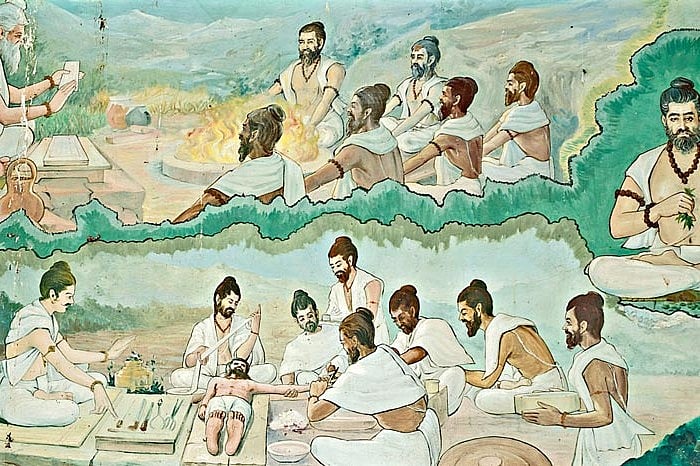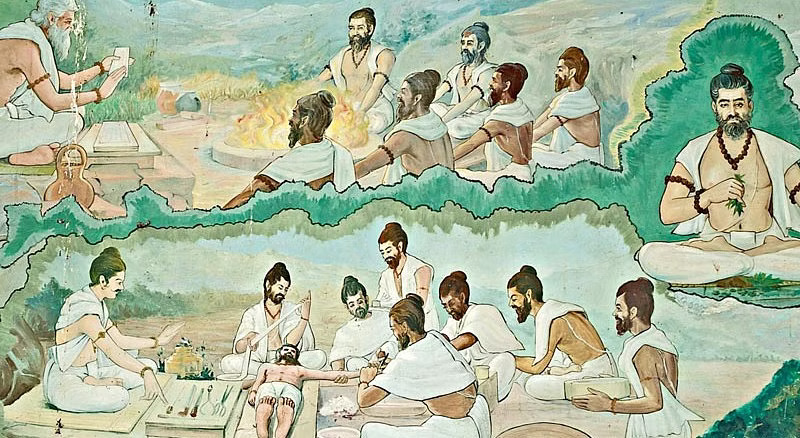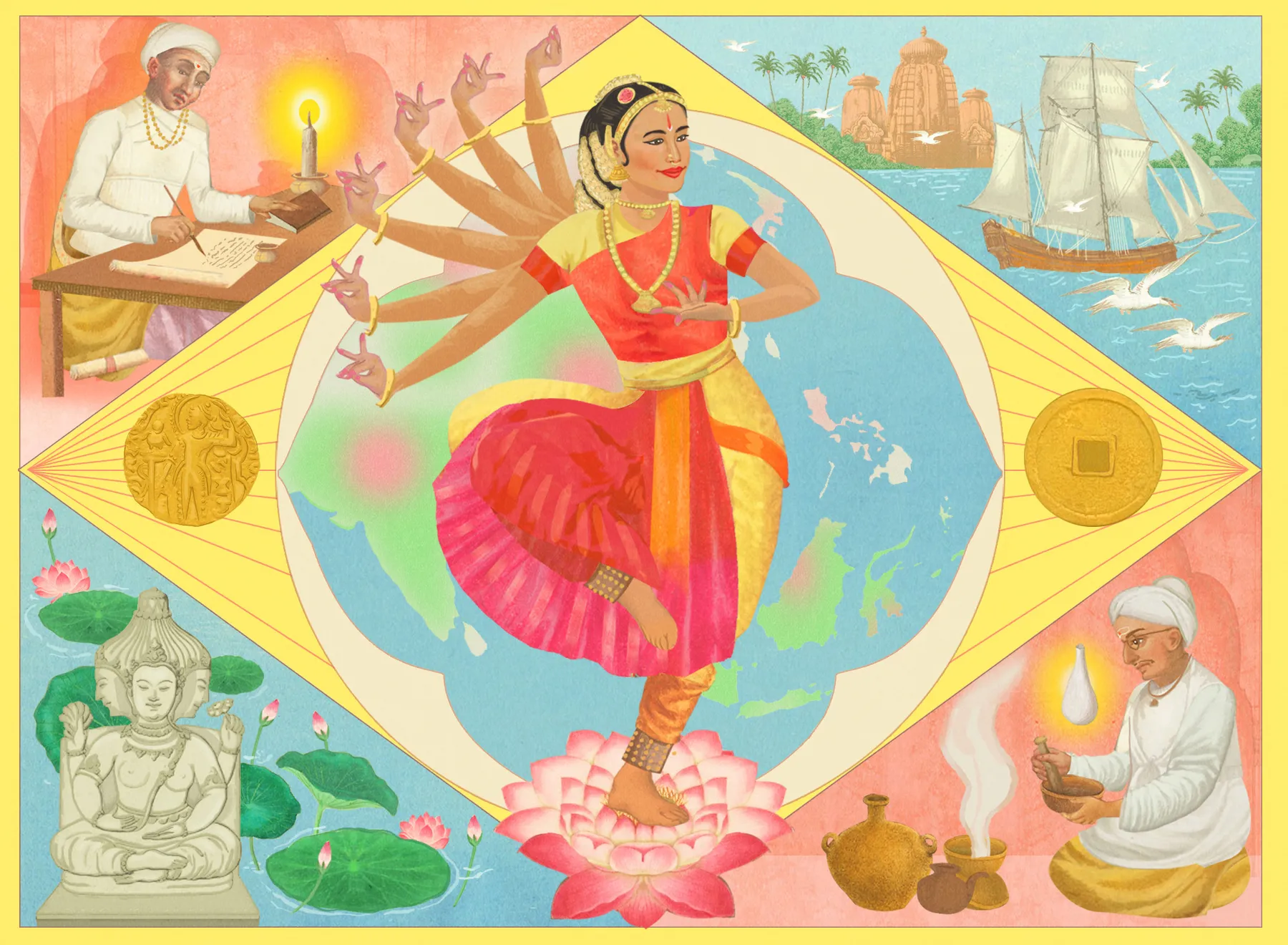India is already a behemoth in the Medicine world thanks to the sheer volume of doctors it produces in comparison to the rest of the world’s numbers and it’s not just because of the population proportion either. However, if you dig deeper into history, India has actually always had a leading reputation in the field of medicine. It recognised the use of medicines for diseases far before anyone else in the world and even today, the basis of most modern medicines still boils down to the wisdom of Indian medical practices of years gone by.
In today’s list for the weary, we take a look at some of the biggest, most incredible contributions made by Indians in the field of Medicine.
I. Ayurveda
Also known as the science of longevity, Ayurveda is an ancient and traditional form of medicine that is not only prevalent today, but incredibly well-reputed and successful as well. The system of medicines is solely based on herbs and herbal compounds. Although Atreya and Agnivesa dealt with the principles of Ayurveda in 800 BC, Charaka Samhita is credited with the first Ayurvedic compilation. He was the first physician to posit the concepts of digestion, metabolism and immunity. He studied the human body and offered various remedies for numerous diseases.
Did You Know: A common misconception is that Indians use spices and herbs in their food to preserve it – however, this is only partly true. The herbs and spices actually form the basis of Ayurveda and were an effort to combine preventive medicine with everyday meals. Ayurveda dates back to 1st millennium BC, and laid the foundation for modern medicine.

II. Siddha
Now while Ayurveda was flourishing up north, the south of India couldn’t rely on it because herbs were not available all year long. Hence, the Siddha Saints came up with their own solutions in 5 BC – the Siddha medicines. Rich and simple, the Siddha medicines were made from a combination of everyday spices and fruits, while also using certain metals, minerals and chemical products for the same.
Did You Know: It was believed that preparations of mercury could provide the human body with immunity from decay. However, it is now an obvious fact that mercury consumption is fatal.

III. Surgery
Aptly called the “Father of Surgery”, Susruta was a great Indian surgeon who is credited with the book Susruta Samhita. In the book, he is said to have described over 300 surgical procedures and about 120 surgical instruments (all his own inventions). He also classified surgeries into eight categories for a better understanding. In the books, he has described every form of surgery – from bones, to tissues to various organs as well. He has also described the symptoms of diseases and offered prognosis for the same. His work was eventually translated and reached the Arab world, from where it was then transported to Europe many years later.
Did You Know: He made use of ant heads to hold skin together when stitching and substituted what we know as anaesthesia with wine!

IV. Plastic Surgery
While it may seem like a modern invention, Plastic Surgery was actually being carried out in India by 2000 BC. The method, they say, is not dissimilar to the method used today. In fact, some of the instruments and tools for surgery described in the book are still being developed in the 21st century.
Did You Know: The purpose of it back then was not nearly as aesthetic or superficial, it was more about improvement of deformed body parts, most notably ears, noses and using skin from other body parts for the same was a norm back in the day as well.

V. Cure for Leprosy
There are two instances where the first ever cures for leprosy are mentioned, and incidentally, both are from India. Which one is more accurate, however, is debatable. While Kearns and Nash say that the first mention of the cure for Leprosy is in Susruta’s famous surgery book, Oxford claims that ritualistic cures for Leprosy were described in the Arth-Veda (way before 2000 BC), which was before Susruta’s time. Either way, one thing’s certain: the cure for Leprosy did in fact originate in India.
Did You Know: Leprosy was looked upon as a demonic curse that people were given for the longest time even in India before a treatment was found.

VI. Treatment of Visceral Leishmaniasis
In 1929, Upendra Nath Brahmachari discovered Urea Stibamine, a treatment for Visceral Leishmaniasis, more commonly known as black fever. Due to his discovery, he was nominated for the Nobel Prize in Medicine. Although he failed to win the award, his discovery has led to the complete eradication of Black Fever throughout the world, with the exception of very few underdeveloped nations.
Did You Know: In India, Black Fever came to be known as the disease of the poor, seemingly only existing in the lower class communities where basic amenities and hygiene were lacking. This was largely because the single-room, thatched mud huts that the agricultural labourers inhabited offered a perfect breeding ground for the sand flies, which lay their eggs in the crevices found in the mud walls and flourish in the huts’ high humidity environment, especially during monsoon season.

VII. Yoga
This might seem like an odd pick for a medical contribution but considering it is one of the most life-affirming practices that exist, we believed it deserved a spot. Yoga is the first form of exercise known to man. It was practised in order to stay fit, and to achieve peace of mind hence prolonging the health of the body.
Combining various Asanas and self-discipline, the aim of Yoga was to relieve the body of stress while also maintaining the overall fitness of the body. Yoga has gained immense popularity in recent years, is practiced worldwide, and thus, it has benefitted the world on the whole.




